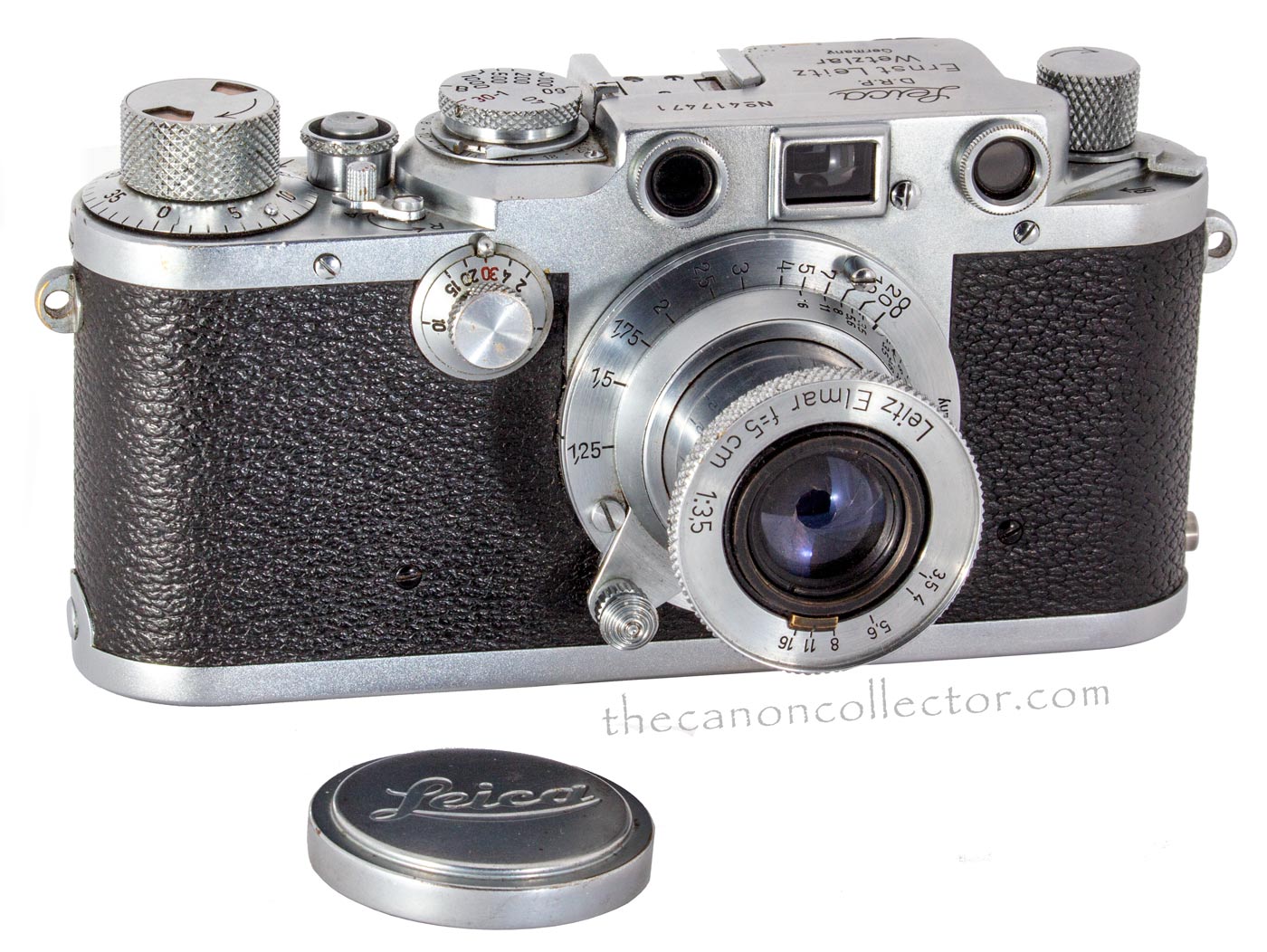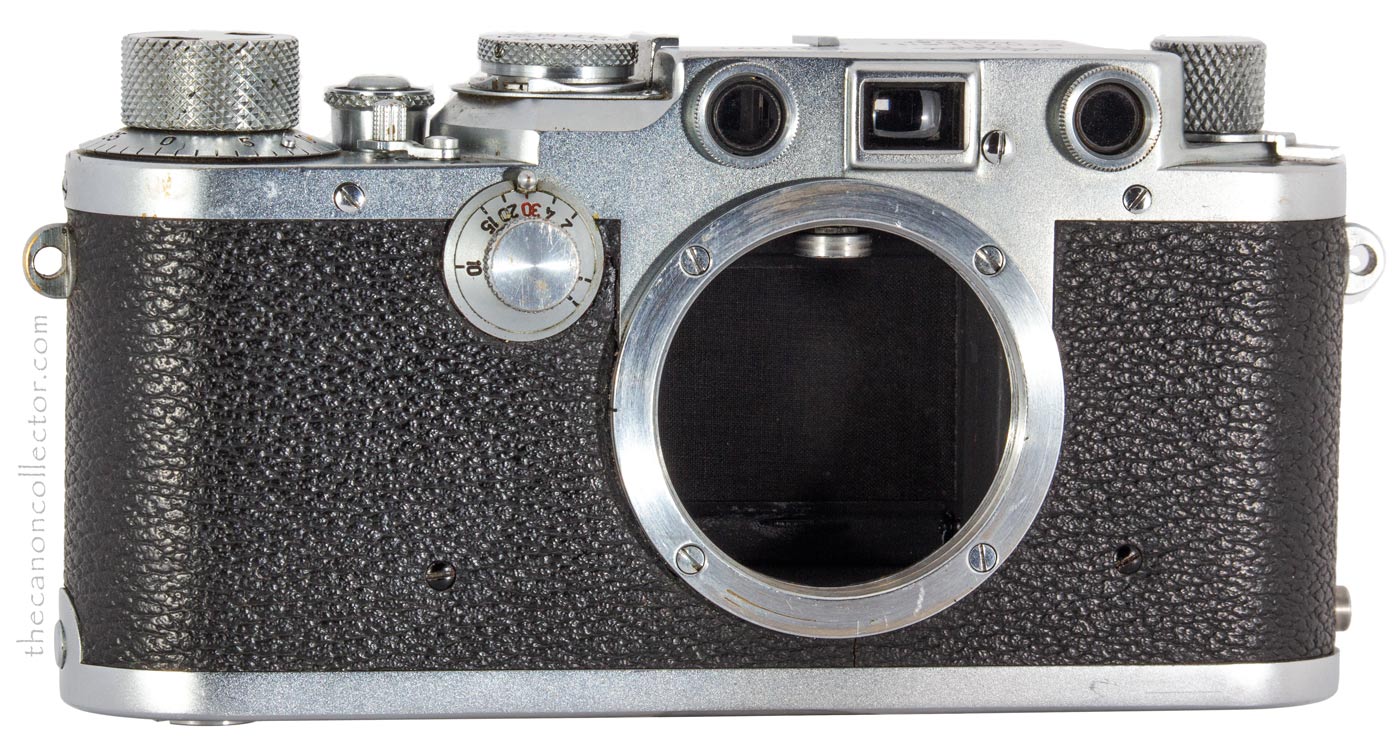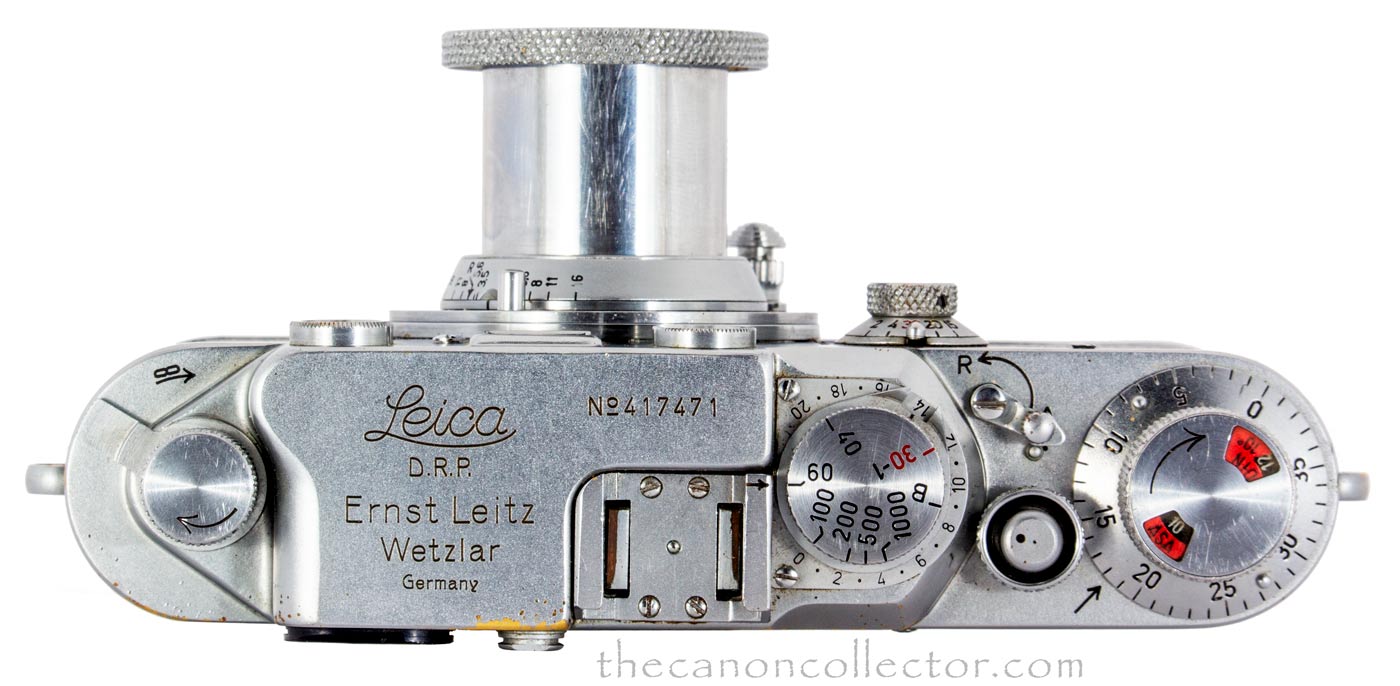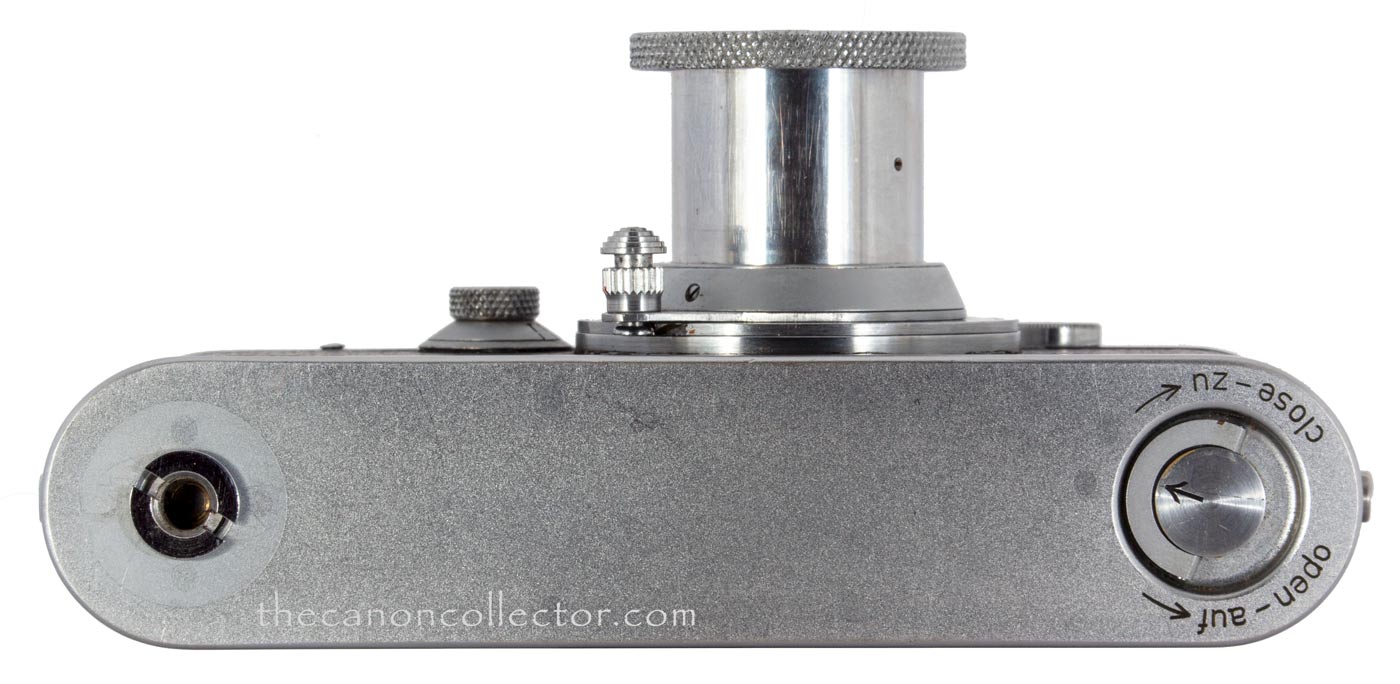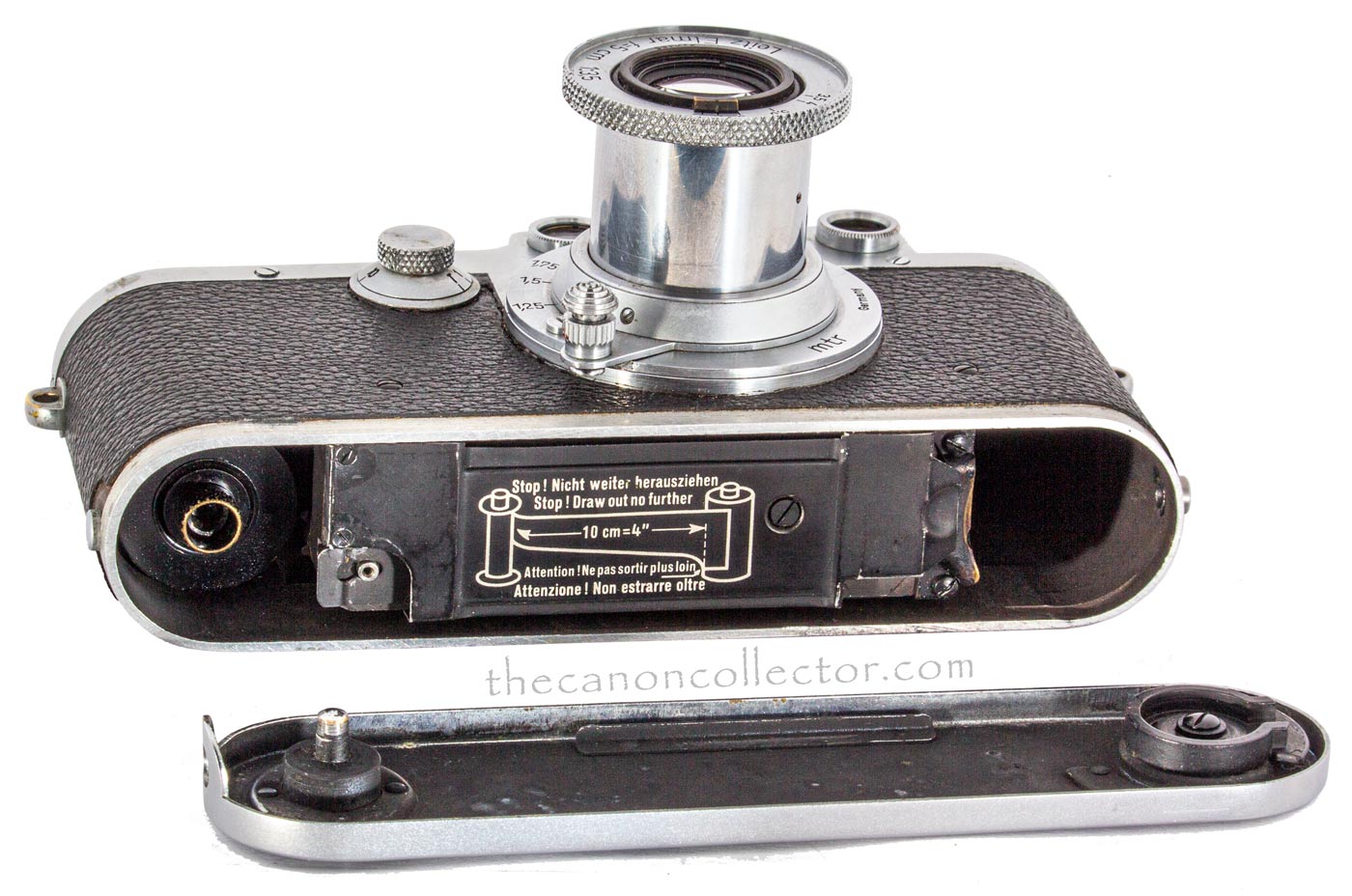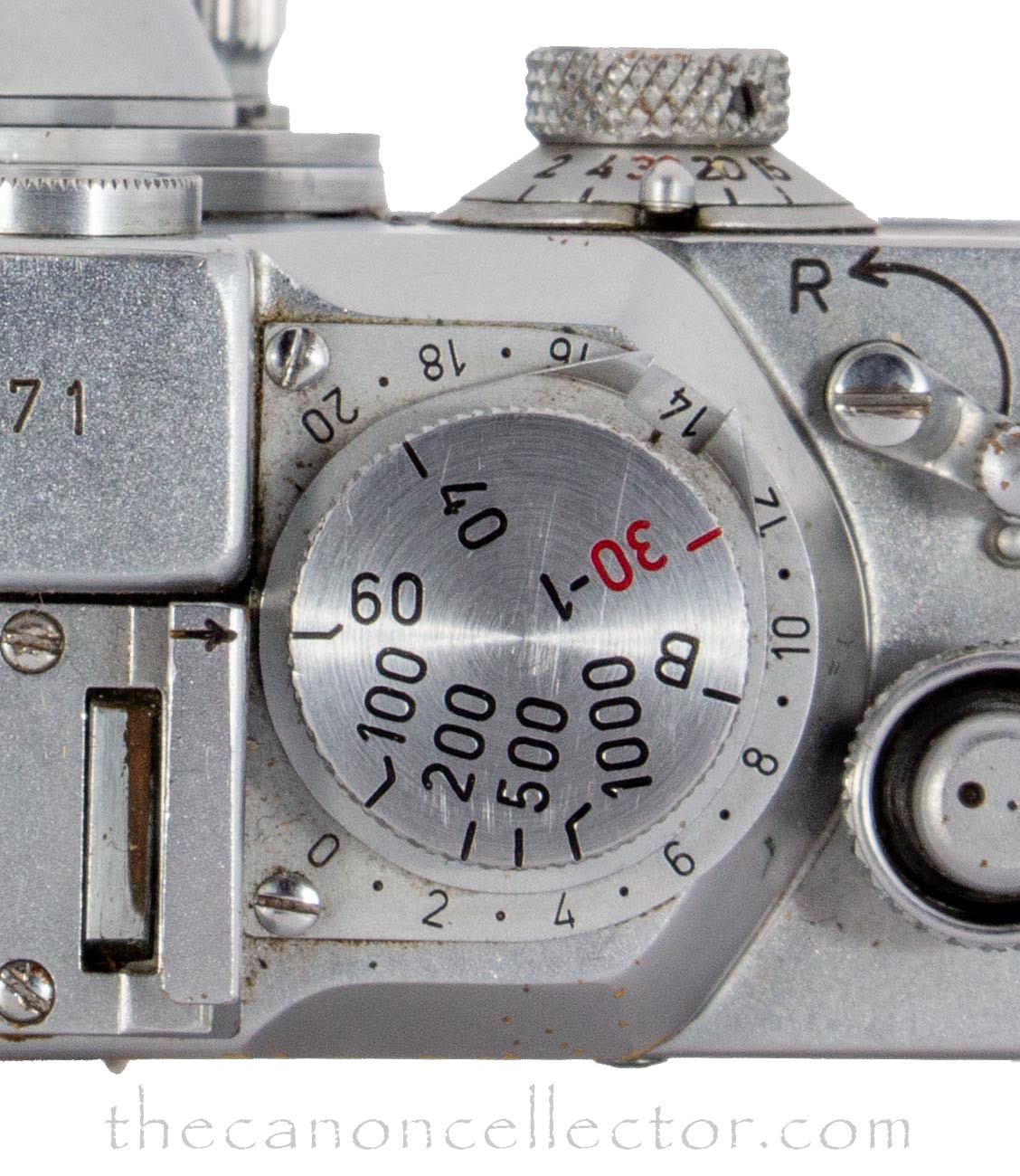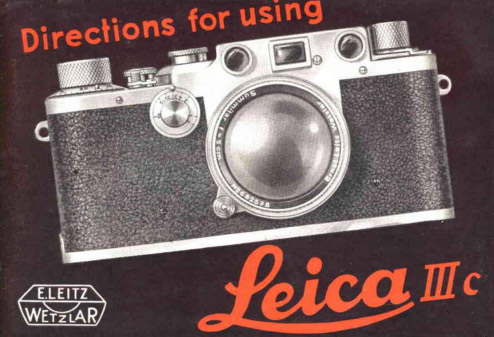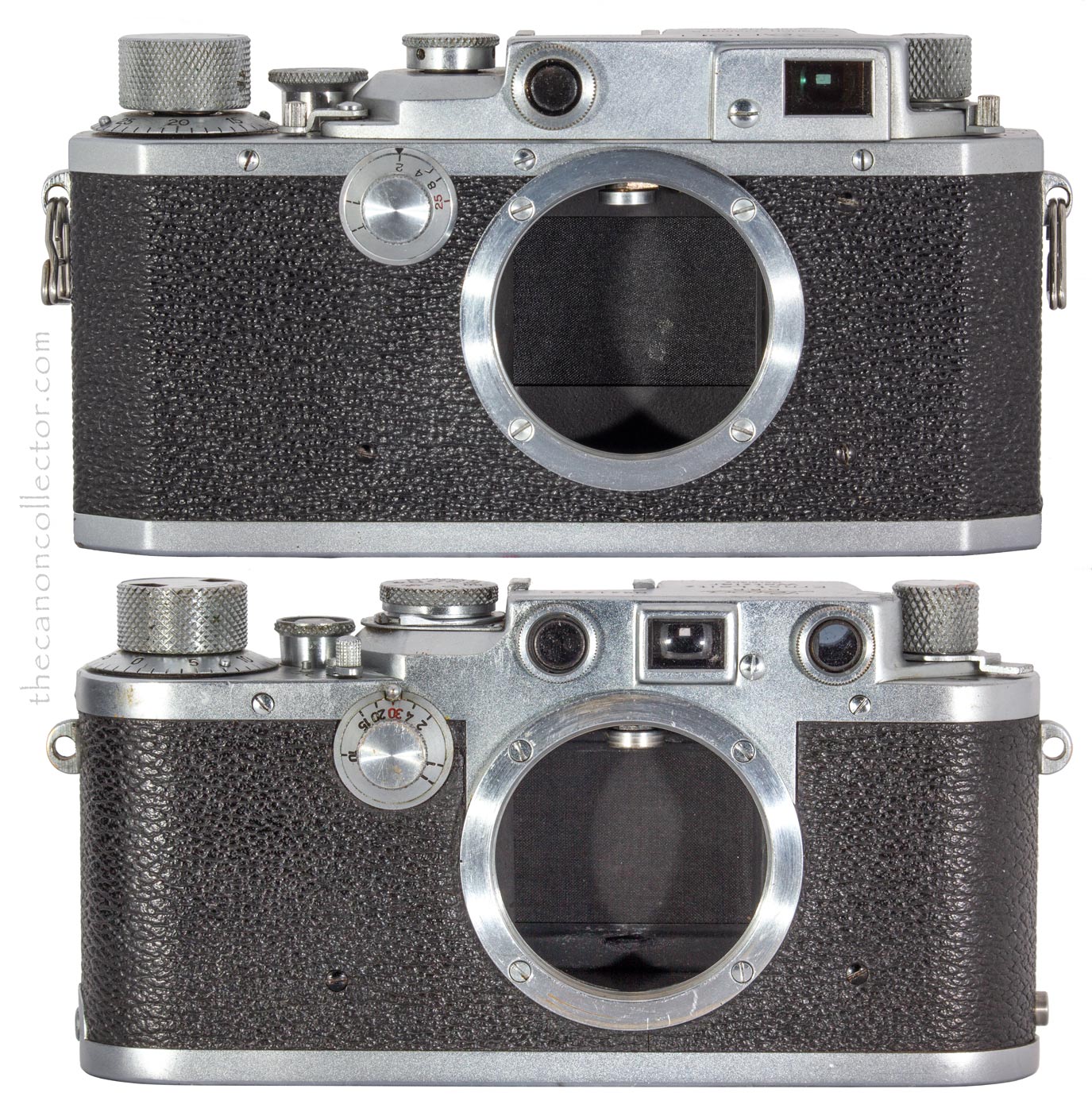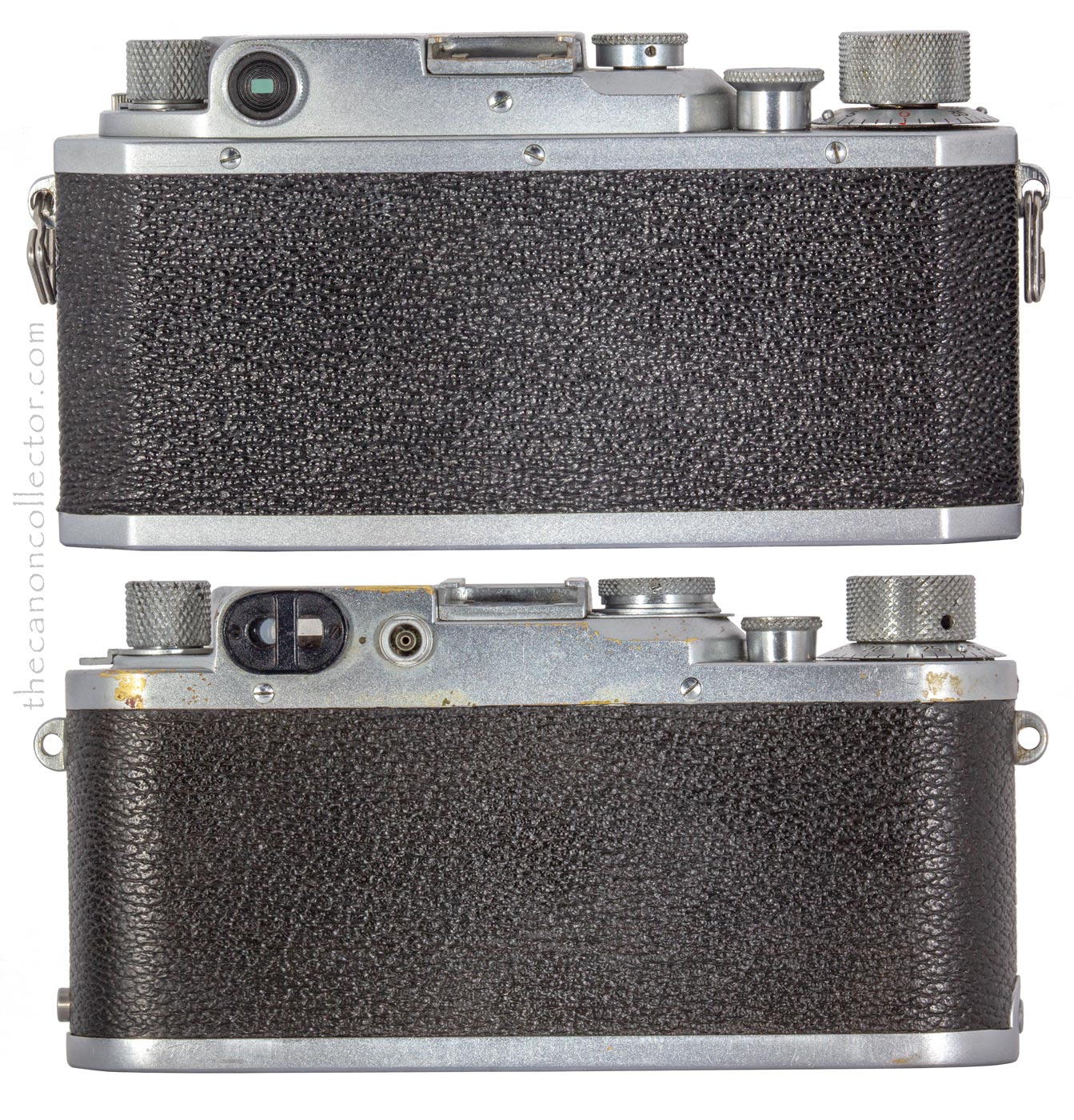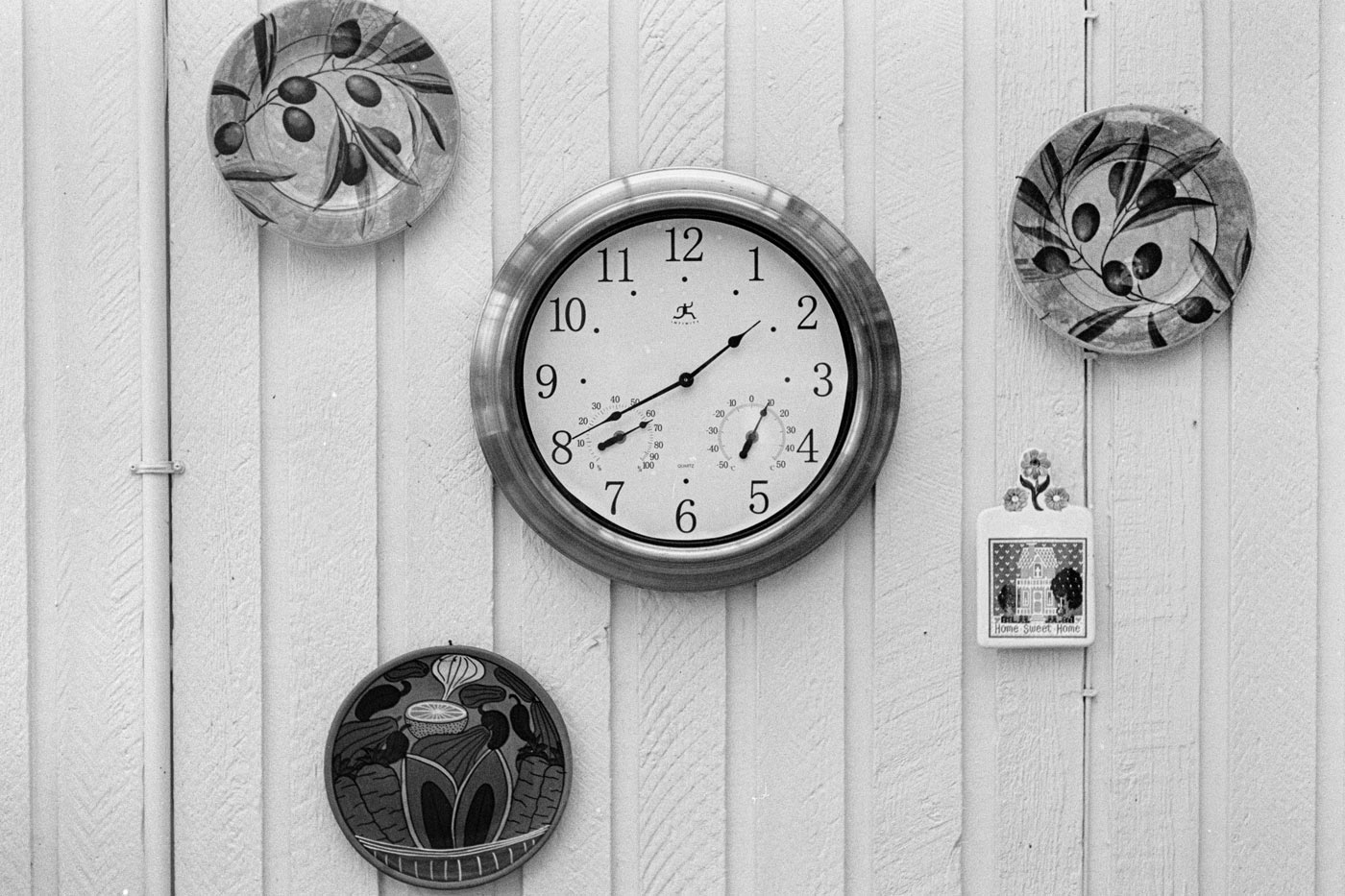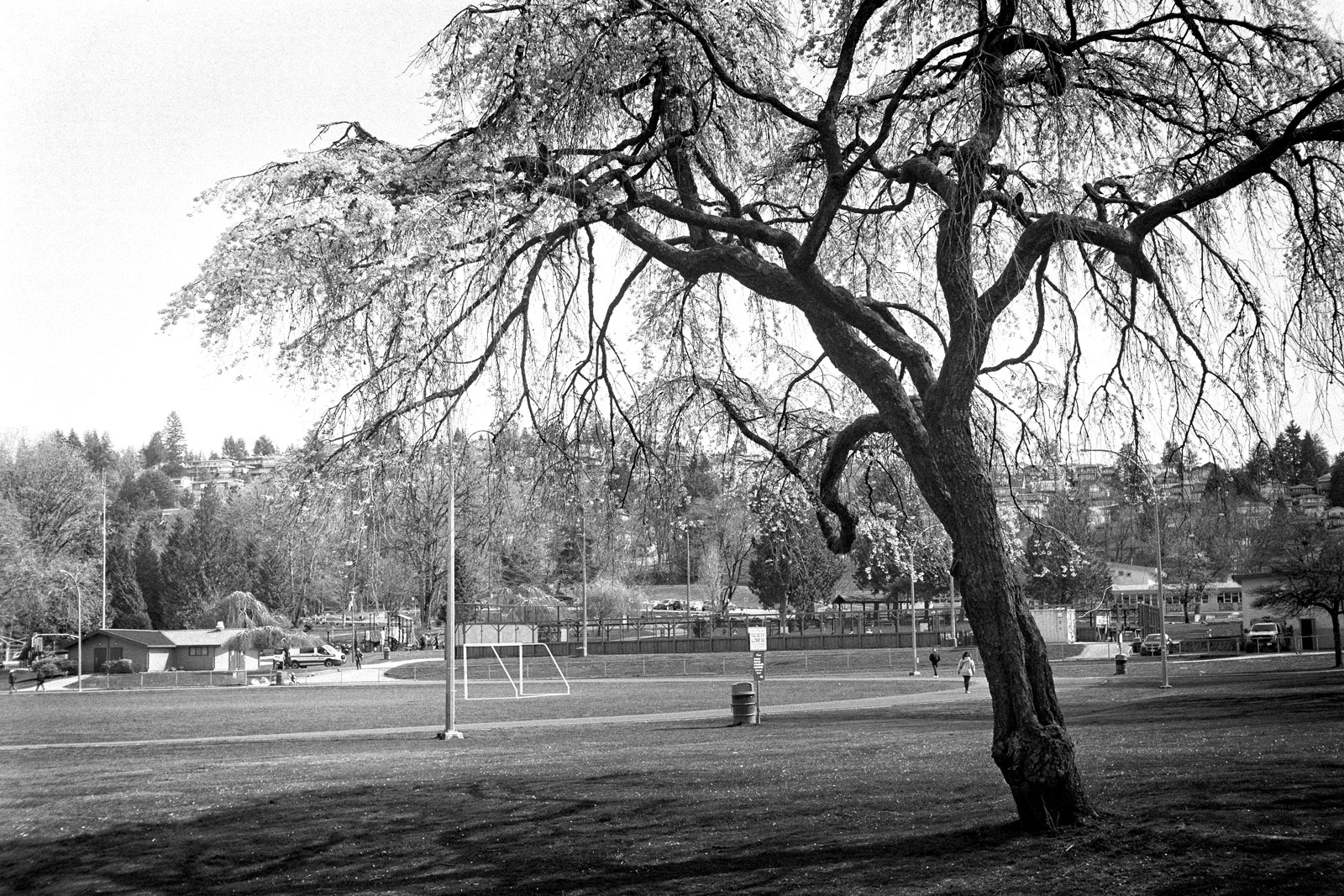This is my Lica IIIc (Ser. No. 417471) with its Leitz Elmar 50mm 1:3.5 Lens (Ser. No. 640155).I acquired this camera to better understand the influences onthe early design of Canon cameras.
The Leica IIIc
The early Canon cameras, the S-II,
Model IIB, Model III, Model IIIa, are considered to be Leica copies. In
the late 40’s and 1950’s many
companies created 35mm cameras based on the Leitz camera including
the M-39 screw lens mount. The
Russian FED, the Japanese Leotax or Nicca, were very close copies that looked almost identical to the Barnack inspired Leica camera Models II and III. And looking at the early Canon cameras it is obvious that the Leicas were the inspration for Canon.
To understand the early Canon machines I acquired a Leica IIIc to see why these Leitz cameras we so popular and
so copied. It has been a revelation. I am a Canon fan but I love this Leica IIIc. So let’s talk about why.
A Brief History of the IIIc
We have already discussed Leitz, Oskar Barnack and the development of the M-39 lens mount. The early Leitz cameras were very successful in the market although they were very expensive. The Leica II, which looks like a Leica III without the slow speed dial, was introduced in 1932 and the Leica III a year later in 1933. Leitz continued to develop their camera with a Model IIIa in in 1935, IIIb in 1938 and finally the Model IIIc in 1940. Each new model included small improvements, mostly internal.
The Leica III’s had a slow speed dial. The II’s did not. However, the both had the M-39 threaded lens mount and three “windows” across the front.
The IIIc was the first to have a cast aluminium frame which made the camera more solid and durable. It had other small improvements such as improved light baffles. It was an evolution and not a revolution. Just like Canon, Leitz made improvements to their cameras as they went along making small changes bit by bit.
On the top, the rewind knob is on the left. then we find the equipment shoe, the shutter speed dial, shutter button and finally on the right the film advance knob.
The bottom plate is very simple. There is the tripod attach point on the left and the key to open the bottom, which is necessary to load and remove the film, is on the right.
The IIIc was introduced in 1940 and it remained in production until 1951. Approximately 131,000 were made and they fall in the serial number range of 360,101 thru 525,001.
In 1950 Leitz introduced the Model IIIf which added flash synchronization. I mention this because Leitz did factory upgrades of cameras to include features of later models on earlier ones. I believe this IIIc of mine to be one of those. Its serial number falls in the middle of the range for the IIIc but it is equiped for flash synchronization and the film speed reminder on the film winder knob which were improvements made with the introduction of the IIIF.
A metal plate with the numbers 1 thru 20 printed on it is screwed to the top deck of the camera under the shutter speed dial. There is a pointer arm on it that can be moved to any of the numbers on the plate. This determines the length of delay between shutter button press and the time the shutter begins to open. This variable delay compensates for the different delay times found in flashbulbs before they reach maximum brightness. You want the shutter open at peak brightness to derive maximum benefit from the flash. This feature can be ignored if you are not using the flash to illuminate your subject, which is most of the time.
If you look at the shutter speed dial you will see a plate that has been screwed into place under the dial. Over it is a selector that can be moved to any of the numbers from 1 to 20 on the plate. This was a modification made to the Leica IIIf but on the IIIf the numbers were printed right on the metal of the top plate. On upgraded IIIc’s the numbers were on a plate that was installed under the shutter dial.
In the 1930’s and 40’s flash photography was with flash bulbs. But not all flash bulbs were equal. They had different delay times before they reached peak brightness. To accomodate this the camera had an adjustible delay from the time the shutter was pressed and the time the shutter curtains actually began to move. All of this is explained in the user manual for the IIIf if you want to know more.
Discussion of the flash sync features of the IIIf begin on page 34 of the Instruction Manual and the numbers under the shutter speed dial are explained there and on the following pages.
So that is my Leica camera. Being Serial No. 417471 it is right in the middle of the range for the Model IIIc but it has features that did not appear until the model IIIf so it appears to have been upgraded at some point. The workmanship is very well done and this was undoubtedly a factory upgrade.
This camera operates like all Barnack type cameras so it is not difficult to operate if you are family with any of the Barnack style cameras. I will not get into operational details which are well explained on other websites and, of course, you can look in the IIIc Instruction Manual that came with the camera.
Comparing the Canon Model III (top) with the Leica IIIc (bottom) we see the similarity immediately.In fact, they appear identical except for the angled shape on the ends of the Canon and the lack of a third window on the top front. One window was eliminated when Canon combined the viewfinder with the rangefinder.
From the back these are the same camera. The Leica is given away by the double eye piece,left side for the rangefinder and right side for the viewfinder.
Look at this example of compatibility: my Leica IIIc secured in a Canon Camera Holder and mounting an early Canon Serenar lens.
The Leica compared to Canon Rangefinders.
One of the founders of Canon, Goro Yoshida, made no secret that he got his inspiration for a quality Japanese 35mm camera from disassembling a Leica Model II. He was impressed with how simple the camera was internally for such an expensive item. And so, the Leica played a big role in the development of the Canon camera.
That being said, it was the goal of the founders of Canon to improve on the Leica II and III and to innovate where possible. Very early on Canon figured out how to combine the viewfinder and rangefinder into one eyepiece. That is the reason for the elimination of one of the windows on the front of the camera. It was very innovative although the early examples of this design left much to be desired. Quite frankly, the viewfinder on the Canon III was terrible.
However, physically, it is obvious that the Leica was the inspiration for these early Canon models. Just look at them.
From the top it is impossible to say that the Canon designers of the Model III were not looking at the Leica IIIc very closley.
From the bottom the Leica IIIf and the Canon III appear to be identical except for the Canon’s angular corners at each end of the body.
Canon was not alone in attempting to produce a Barnack style 35mm camera. The Japanese Leotax and Nicca cameras were even closer copies of the Leica III. In fact, the Leica was probably the most copied camera design ever.
The similarity of the Canon and Leica cameras is further demonstrated by the photo on the right. That is my Leica IIIc mounted in a Canon Camera Holder. Not only that, it has a Canon Serenar 50mm f/3.5 mounted on it. And it all functions perfectly.
So, my Leica IIIc fits right into my Canon collection. My Canon lenses fit and function perfectly. The only exception is the very early Canon rangefinders which did not have an exact M-39 thread. One must be careful trying to mount Leica lenses on these early cameras because you might jam the threads and maybe cause damage.
So what’s it like to Shoot?
Remember, this is not a camera review. It is a discussion and not an analysis. However, I can say I like this camera. It is in most respects just like using a Canon III. It has the same problems loading film and being a rangefinder it has the same “lens cap on” moments. It has the same solid build and it feels the same in the hand. It is not hard to understand why this camera was so popular. For those of us afflicted with a love of fine mahinery this camera is satisfying.
There is only one thing that stands out that I want to comment on: the viewfinder and rangefinder. On this camera the two functions are separate and have different eyepieces. Look into the right side of the eyepiece and you see just the viewfinder and a really nice view of the scene the camera will capture. And it seems much clearer and better defined than the combined viewfinder on the Canon III.
But, for me and my old eyes, the treat is when you look into the left side of the eyepiece: you have the view finder only, the usual double image that you have to line up, and it is at 1.5x magnification. It is so easy to use. And to add to all this goodness, the lever on the top left side of the camera is a diopter adjustment to bring the rangefinder into sharp focus ( it is all explained on Page 17 of the Leica IIIc Manual available above ). I admit that Canon’s system of combining the functions was the way of the future but in their early cameras it was far from perfect. I prefer the Leica arrangement.
As part of my voyage of discovery I ran a couple of rolls of film through my IIIc. Loading the film is a pain unless you follow the instructions in the manual about creating a long “leader” on the film. (For this check out the Instruction Manual at pages 38-39.) However, once loaded, the camera functions like the Canon III: very smooth and easy.
The Elmar 50mm f/3.5 was the standard lens for this camera. It is a very basic lens but it is surprisingly good. Well, the setting for the aperture is not that easy being on the front of the lens and close to the glass. If you are not careful you will have your fingers all over the front element.
I did discover that this lens is subject to flare. You must shoot with the sun behind or to the side of you. Otherwise the lens will show extreme flare.
I used Ilford Delta 100 Professional developed 6 minutes in Ilfosol 3 diluted 9:1. Here are some samples from the IIIc with the Elmar 50mm.
This is a simple test setup I use frequently. The wall is on our back patio. The camera is in a Canon Camera Holder and mounted on a tripod (visible on the lower left edge of the image).
Elmar 50mm at f/3.5 (i.e. wide open)
Elmar 50mm at f/8
This little Elmar lens is pretty sharp even wide open. It is noticeably better at 5.6 (you’ll have to take my word for it) and at f/8 it is a real performer. It is soft in the deep corners at all apertures but it impoves with stopping down. For the resolution available with film this lens is more than adequate and it is small, light, and it collapses into the camera body when not in use. What is not to like?
I did learn in all of this that I can trust this camera when I go out to shoot. And that is why I do these “non-reviews” of my cameras and lenses. I want to know my equipment better. And I want to undertand what people in earlier times were shooting and what challenges they faced doing it. This Leica IIIc has earned a place for itself on my “shooter shelf”!
One last image from my Leica IIIc. This is from the same group of images as above but it is a simple scene in our local park. It was a cloudy bright day and the little Elmar was set at f/8. It is hard to tell here but this lens is sharp, really sharp. I have processed the image in Photoshop and OnOne to bring out detail. The scan was done using my Canon R and a Canon FD 50mm f/3.5 Macro Lens on a Bellows FL.

